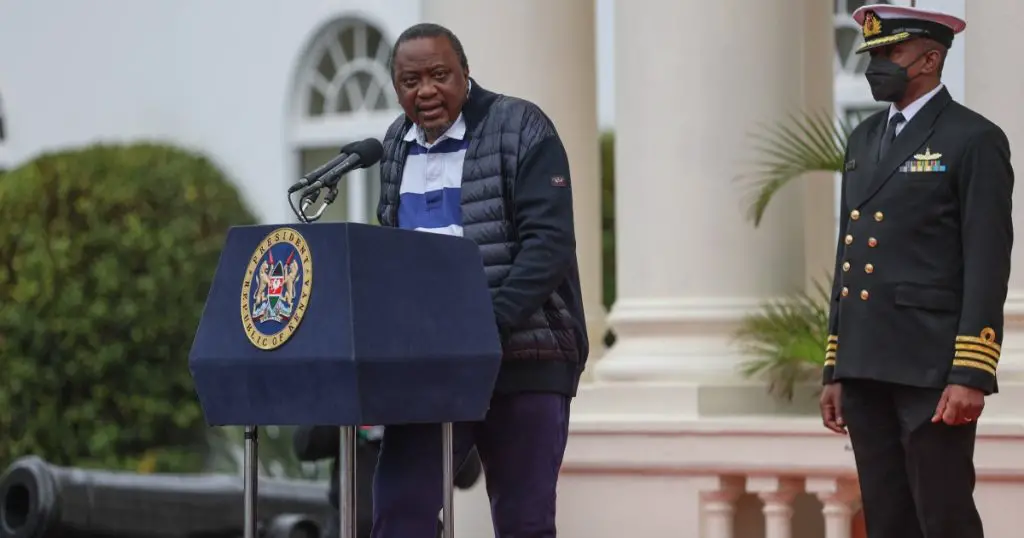- Kenya has announced plans to set up a national automotive council to facilitate the implementation of the National Automotive Policy
- President Uhuru Kenyatta said that the policy is geared toward boosting the local assembling of motor vehicles
- Kenyatta said his administration had committed to creating an enabling environment for the growth of the country’s automotive industry
Kenya has announced plans to set up a national automotive council to facilitate the implementation of the National Automotive Policy.
On Tuesday, July 12, 2022, President Uhuru Kenyatta said that the policy is geared toward boosting the local assembling of motor vehicles.
Kenyatta said his administration had committed to creating an enabling environment for the growth of the country’s automotive industry.
The president said he would get the council established, adding that it would be something his government would do before leaving office next month.
He said the policy would ensure that they create an enabling environment for the institutions that will see the automotive industry continue on its growth trajectory.
He spoke when he launched the locally assembled Euro 4 Mitsubishi L200 pickup at State House, Nairobi.
Kenyatta encouraged stakeholders in the industry to continue working with the Government to ensure it achieves its objectives of reviving and stabilising the automotive sector.
“I really appreciate the partnership that we have had that has led to a revival of this industry that was once-moribund and for me to give you my assurance and my commitment that we shall continue to work together to reach the targets that we envisioned way back in 2019.
“….our determination to ensure that future Government also continue with the same policy because this is not only good for increasing the manufacturing capacity of the country but also good in terms of skills transfer, to create jobs for our people and to create new opportunities,” he said.
Noting that the country used to have one of the most vibrant automotive industries in the region, President Kenyatta said the Government will remain steadfast in ensuring policies aimed at bolstering the growth of the industry continues to be implemented.
“We had all these people who were out there making break pads, we had people making windscreens, we had people making suspensions and shock absorbers and all these things. It is my hope that as we continue to increase the number of vehicle assembling plants, we will also have the backward linkages that would also enable some of these other industries that were a critical cog to local assembly revived, restored and brought back into play,” President Kenyatta said.
Industrialisation Chief Administrative Secretary (CAS) David Osiany said the implementation of the National Automotive Policy will ensure the country regains its position as a regional automotive manufacturing hub.
He said the industry has the capacity to produce 30,000 vehicles per annum but regretted that the assembly plants are currently producing a paltry 6,000 units, accounting for less than 25% of the production capacity.
“The industry has been able to provide 100,000 direct and indirect jobs to Kenyans. The industry also contributes about 30 billion per annum to the government through taxation,” the CAS said.
Japanese Deputy Ambassador to Kenya Yasuhisa Kitagawa said his country is committed to its partnership with Kenya to ensure all designed projects are fulfilled for the benefit of the citizens of the two countries.
The AfCFTA: An Automobile Industry Perspective
“Mombasa city where the L200 is assembled is an area that Japan has very strong commitment through giant projects such as the expansion of port facilities and development of Special Economic Zones,” Kitagawa said.
Simba Colt Corporation Limited Chairman Adil Popat said AVA has increased its production from 2000 units to 7,500 units in the last three years.
Who takes Africa’s burgeoning motor vehicle market?
In a separate story, The Exchange Africa reported that the African automotive market has been predicted to grow at a CAGR of around 6.5 per cent from 2018 until 2026.
Of all automobile markets in the world, Africa is the most underdeveloped except for South Africa, Morocco, Egypt and Algeria. The automotive market in the rest of Africa is considerably small in comparison.
The low-average income and the lack of a sizeable middle-class population are the major reasons for this limited growth. In addition, the high lending rates have made ownership of a car restricted only to the wealthy and prosperous.
Ghana, which is a promising market, has a car loan interest rate that fluctuates around 32 per cent. Nigeria, which is the biggest economy on the continent has a loan interest rate of about 12 per cent. With these numbers, it makes taking a car loan is an expensive proposition which hinders the automobile market in the country.
Another big challenge to the automotive industry on the continent is the importation of used cars from other countries.
Countries like Kenya, for instance, get cars from Japan where strict vehicle inspections force cars out of circulation after just a few years. For the sector to outgrow these challenges in the East African nation, the government plans to wind down imports of cars that are more than three years old by the end of this year.
